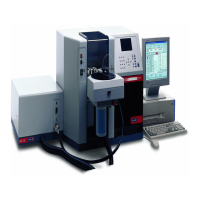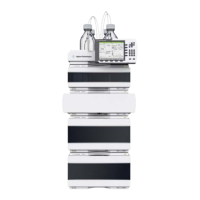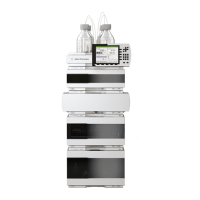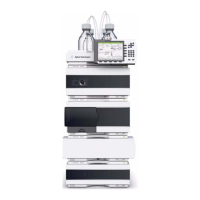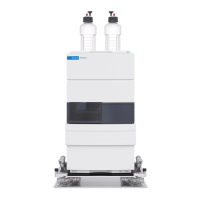10 Agilent 1200 Preparative Pump User Manual
1 Introduction to the Preparative Pump
Introduction to the Preparative Pump
For pump specifications, see “Site Requirements” on page 24.
How Does Compressibility Compensation Work?
The compressibility of the solvents in use will affect retention-time stability
when the back pressure in the system changes (for example, ageing of
column). In order to minimize this effect, the pump provides a compressibility
compensation feature which optimizes the flow stability according to the
solvent type. The compressibility compensation is set to a default value and
can be changed through the user interface.
Without a compressibility compensation the following will happen during a
stroke of the first piston. The pressure in the piston chamber increases and
the volume in the chamber will be compressed depending on backpressure and
solvent type. The volume displaced into the system will be reduced by the
compressed volume.
When a compressibility compensation value for the pump head is set, the
pump processor calculates a compensation volume that depends on the
system pressure and the selected compressibility value. The pump has a fixed
stroke. To compensate for compressibility losses, the speed of the piston
movement has to be varied during the different parts of each stroke.
Tabl e 1 Preparative Pump Details
Materials in contact with mobile phase
Bottle head assembly glass frits, PTFE compounds, PEEK
Pump head SST, sapphire
Inlet/Outlet Valves SST, sapphire, ruby, PEEK
EMPV SST, ruby, sapphire, PEEK
Filter Cup SST
Filter Plate SST, PEEK
Pressure Sensor SST, PEEK
Capillaries SST

